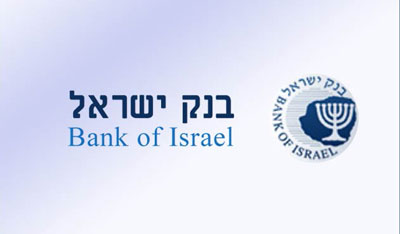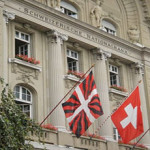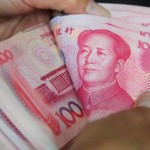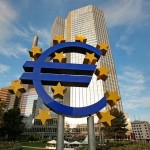Bank of Israel reports Monetary Policy for the six Months 0f 2016

Monetary policy: During the first half of 2016, the Monetary Committee decided to leave the interest rate at a level of 0.1 percent. For both July and August, which belong to the second half of 2016, the Monetary Committee also decided to leave the interest rate unchanged. Similar to the announcements of the interest rate decisions for November and December of 2015, all announcements in the first half of 2016 included forward guidance in announcing that monetary policy is expected to remain accommodative for a considerable time. In addition, the Bank of Israel continued to purchase foreign currency, purchasing $4 billion, about $0.9 billion of which were purchased as part of the program intended to offset the effects of natural gas production on the exchange rate. The rest were purchased as part of the program intended to moderate excessive fluctuations in the exchange rate.[1]
Inflation and inflation expectations: During the twelve months ending in June 2016, the CPI declined by 0.8 percent. The energy component continued making the main contribution to the decline of the CPI, as a result of the sharp decline in global oil prices, even though this trend reversed itself during the first half of the year. The policy measures adopted by the government, primarily the reduction in VAT and the cancelation of the television levy, also contributed to the decline in the CPI in the past year, but it seems that this contribution is close to dissipating. Net of the direct effect of energy prices and the government policy measures, the CPI rose by 0.6 percent in the past year.[2] If the volatile prices of fruit and vegetables are also excluded, the increase in the CPI reached 0.8 percent. While short-term inflation expectations (1–3 years), based on the various sources, increased slightly over the period (June average compared with the December 2015 average), those expectations were quite volatile during the period, declining sharply at the beginning of the period and correcting later on. Forward expectations for the medium and long terms remained at the center of the target range or slightly below it throughout the period.
Domestic real economic activity: The economy continued to grow at the moderate rate that has characterized it during the last two years, except for a slight—and apparently temporary—decline in the first quarter of 2016. The decline in the first quarter was mostly a result of contraction in exports, mainly in the four main export industries.[3] The contraction of exports was partly a result of the decline in the growth rate of world trade and of the accumulated appreciation of the shekel, as well as one-off developments among a number of large exporters in the economy. In contrast, current private consumption continued its impressive growth and to lead economic growth. The labor market remained robust, with employment continuing to grow, unemployment remaining low, wages continuing to increase, and the economy close to full employment.
The exchange rate: During the first half of the year, the shekel remained stable in terms of the nominal effective exchange rate (the average in June relative to the average in December), and relative to the dollar. Relative to the euro, the shekel appreciated by about 3 percent. Various models of the equilibrium exchange rate indicate that the shekel is overvalued.
The global economy: The growth rate of global economic activity moderated during the reviewed period, and in parallel, the forecasts by leading international organizations were revised downward. These organizations also estimated that the risks to the growth forecasts tended downward. The weakness was focused on the emerging markets, but the advanced economies—particularly the US and the eurozone—also lost momentum. These developments were accompanied by sharp fluctuations in the markets and in commodity prices, particularly the price of oil, which declined sharply at the beginning of the period, and later rose. The accommodative monetary policy around the world increased during the period. In March, the ECB announced the implementation of quantitative easing totaling 80 million euros, and the central banks of China and Japan also took accommodative measures. At the beginning of the reviewed period, assessments increased in the markets and among members of the Federal Reserve that there would be a delay in the next interest rate increase in the US. These assessments increased particularly toward the end of the period, after the results of the referendum in the UK led to the decision to leave the European Union (Brexit). However, once the markets calmed, and against the background of a positive employment report in the US, the markets again ascribed significant likelihood to an interest rate increase in the US this year.
The housing market: Activity in the housing market remained lively during the reviewed period: Home prices continued to increase, and the volumes of transactions and of new mortgages taken out remain high. During the second quarter, the real weighted interest rate on new mortgages increased, and the increase in new mortgages moderated against the background of the increasing risk in the banking system’s housing credit portfolio and the measures taken in the past by the Banking Supervision Department. The volume of building starts remained at its high level—although toward the end of the period there was some moderation—and the stock of homes for sale reached record levels. The number of building permits continued to increase. The annual growth rate of rents remained stable at the level that characterized it in recent years.
The financial markets: The domestic share indices declined sharply during the reviewed period (both in shekel terms and in dollar terms, June average compared with December average), against the background of the declines in the leading indices in Europe and in contrast to the indices in the emerging markets and in the US, which increased slightly. As such, the domestic indices continued the downward trend since the beginning of the second half of 2015. The yield curves showed declined in all ranges, mainly in the medium-to-long part of the nominal curve and in the long part of the real curve. This is in line with the decline in short-to-medium term inflation expectations and with stable long-term expectations. The spreads between corporate bonds and similar government bonds remained stable during most of the first half, and declined slightly toward the end of the half.
Fiscal developments: The cumulative domestic deficit (excluding net credit provision) totaled NIS 1.8 billion in January–June, compared with NIS 1 billion (in fixed prices) in the same period last year. It is about NIS 4.9 billion below the seasonal path that is consistent with the deficit target for 2016. The deviation reflects revenues that are about NIS 3.2 billion higher than the path, and expenses that are about NIS 1.7 billion lower than the path. Tax revenues increased by 9.5 percent in real terms relative to June of 2015. Net of legislative changes and one-off revenues, total tax revenue increased by about 11.3 percent in real terms.
Forecasts of the Research Department: At the beginning of the first half of the year, the Research Department presented a forecast in which it projected that inflation would return to within the target range at the beginning of 2017, and that the Bank of Israel interest rate would increase gradually starting in the last quarter of 2016. During the first half of the year, the Research Department revised downward its inflation forecasts for 2016 and 2017, and the expected path of the interest rate, after energy prices showed further declines that were surprising in their strength at the beginning of the first quarter, and following one-time administrative measures taken by the government. In the more updated forecast from June 2016, the assessment that inflation is expected to return to within the target range toward the end of the first half of 2017 remained in place. In view of this, and due to developments abroad, particularly the expected interest rates in the US and in other economies, the interest rate path was lowered, and is expected to increase only toward the end of 2017.
Source: Bank of Israel




























